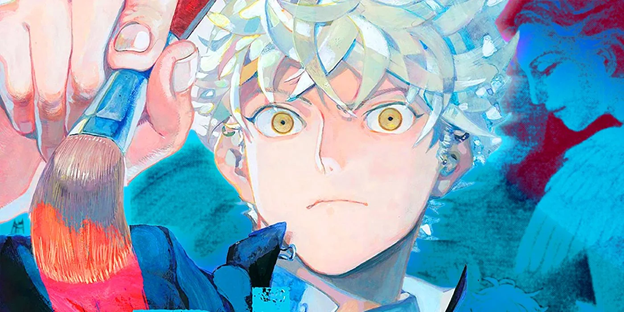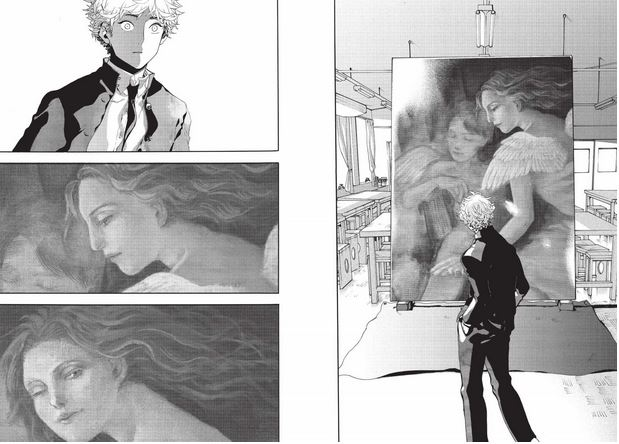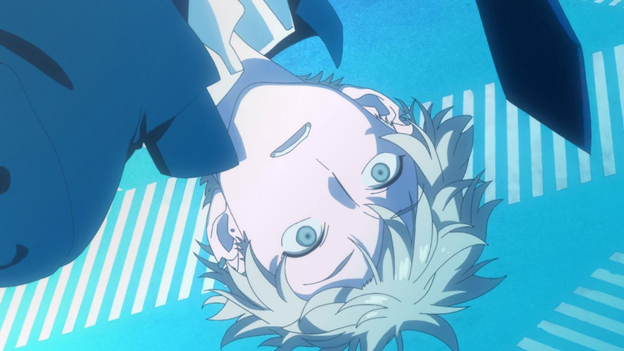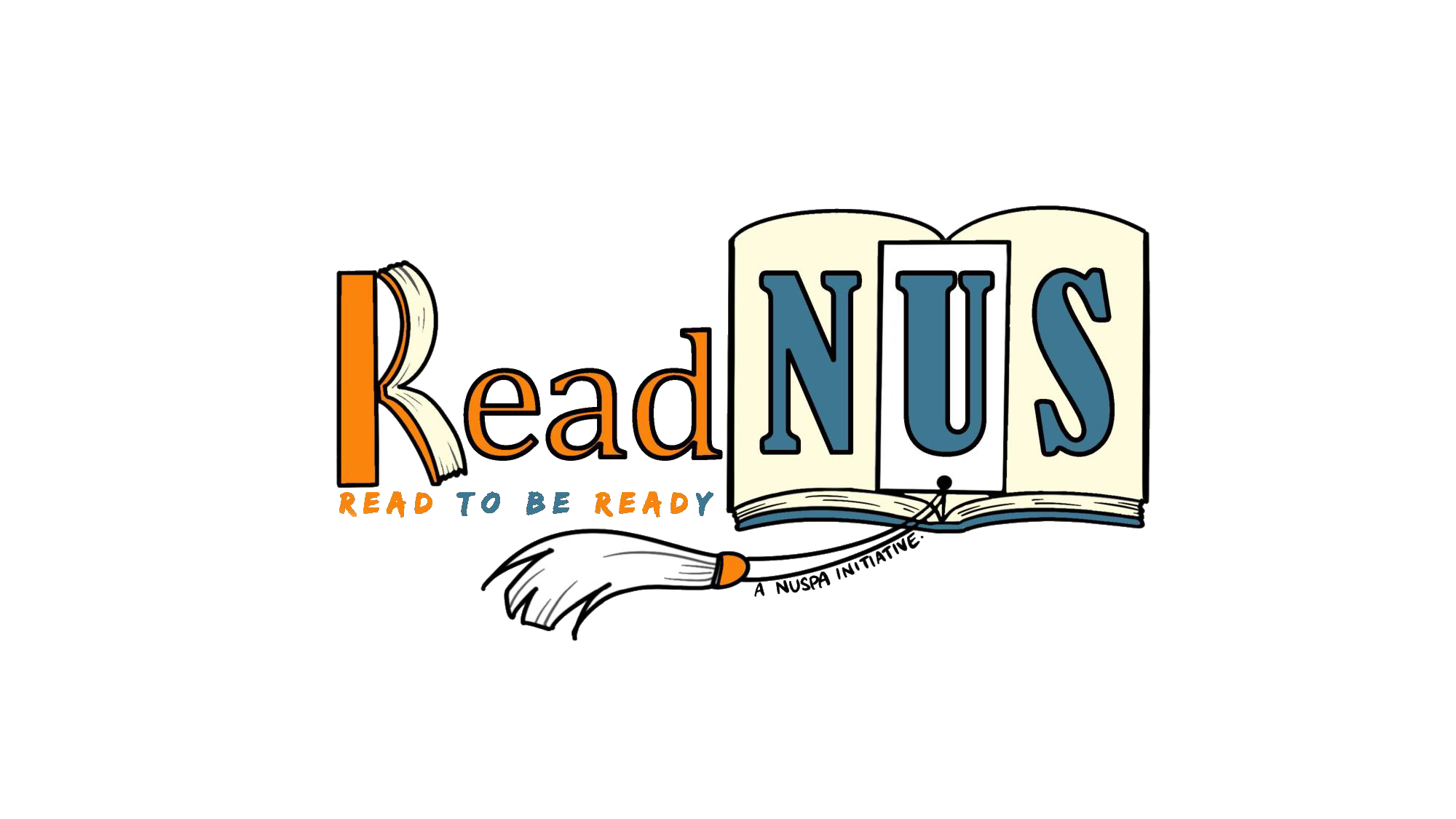Finding Hope in Art: Reviewing Yamaguchi’s Blue Period

“If it looks blue to you, then anything can be blue, whether it’s an apple or a rabbit.” – Blue Period, Chapter 1.
Note: This review attempts to be as spoiler-free as possible, in order to encourage viewers to explore this series themselves! Most of what will be explicitly discussed will be from the first chapter only.
What is art, in your own words? Why has art persisted for so long, if it has become recently deemed as non-essential during the height of the pandemic in Singapore? What is the value in art?
Blue Period stands as an antithesis to viewpoints like these, inspiring a story of hope and the sincere belief that art has the power to inform and influence our perception of life and humanity. In this review, I hope to be able to explain a bit about the manga’s premise, it’s highly relatable and heartening themes, as well as conclude on the potential of manga and art as a compelling medium to explore our human experience.
The Premise: Yatora as the Everyday Student
Warning: This pretty much spoils the entirety of the first chapter. If you wish to go in completely blind, feel free to skip this section!
Set in modern-day Japan (in an education system not unlike ours), the story centers on the perspective of Yatora Yaguchi, second-year high school student who in spite of his delinquent manners, has worked hard to achieve stellar grades and be in the good graces of his peers and teachers alike. One could even say Yatora’s life represents the ideal that we all wished to achieve: popularity, academics and pleasure all ticked. However, the first chapter fleshes out Yatora as being someone who does not have a distinct purpose in life, and has instead only followed what society has inculcated in him to pursue: good grades, good job prospects, good future.
This changes when he stumbles into the art classroom to become enthralled by a painting done by one of his senpais. Inspired, he attempts to channel his feelings into his own art assignment, leading him to realize his passion for art as a means to convey his personal feelings and ideas. After much deliberation, he then sets his sights on applying to the Tokyo University of the Arts (TUA), whose oil-painting department has one of the lowest acceptance rates within Japan.
As such, much of the manga so far has covered the trials and tribulations of Yatora competing with his classmates, rivals, and other students to earn a place into the prestigious school. While the anime adaptation of the manga mainly covers this arc, the manga has moved on to cover the future of Yatora’s life after the entrance examinations (it is probably quite obvious whether he passes the exams if the manga is still ongoing after the exam arc).

The Themes: Talent, Passion and Encapsulating Art
First, one of the things I really liked about this manga is that as a story focused on art, it was able to dismantle one of the biggest misconceptions of art: that art is something resided with only a select group of talented individuals that could call themselves true ‘artists’. As debunked by Mori-senpai, who painted the work that Yatora was initially enamored with, she bluntly puts down Yatora’s praise of her being talented, replying that she spends more time thinking about art than others. She also complains that using words like “talent” imply that she had no agency in creating the art piece. Indeed, we also see the mental and physical toll that working on art takes on Yatora in his pursuit to pass the TUA entrance exams. By centering on the perspective of Yatora, we are able to get an intimate glimpse into the challenges that an artist feasibly faces in their own journey towards improving their art. And simultaneously, we learn as well as share the small victories that artists like Yatora experience, thereby creating a more informed impression on the struggles of being an artist. We may even find it highly relatable to our own life experiences.
This leads to the second point I would like to discuss about Blue Period: its examination on passion and the pursuit of “unpragmatic” interests. In Singapore, the idea of grinding in order to reach a “safe” future is not unheard of. While the government has made some (remarkably feeble, at times) steps to improve interest in the arts of all forms, the current sentiment towards arts is that pursuing the arts is quite a financially unsustainable prospect in the long run. As such, most arts schools mostly cater to children belonging to wealthier families that are able to afford such fees. Nonetheless, we see in Blue Period that Yatora hails from a middle-class family who gets by, but is unable to afford tuition at a private university. This thereby spurs Yatora to set his sights solely on TUA, which is the only public arts university in Japan. While Yatora initially faces doubt in being able to pursue art as a future, he earnestly finds solace and a voice in it, something he previously lacked. As such, Yatora’s choice to put his faith in his newfound passion is quite inspiring, and personally motivates me to pursue my own passions even if it may not be pragmatic in the future.
Lastly, something important Blue Period touches on is the journey to encapsulate art. Art is something that holds a multitude of meanings and values to many people and artists around the world. In the manga, we are able to understand Yatora’s own inclinations towards art, and appreciate both the character development and the artistic sense that he grows over his days of refining and learning new artistic techniques and tools. The author of the manga, Tsubasa Yamaguchi, had previously graduated from TUA as well, and thus organically infuses lessons of artistic tips in composition, colors and techniques within chapters that are simple enough to understand and show how Yatora adapts to these teachings to better himself and his artistic skills. What culminates in this manga is a very approachable story for anyone to follow through. Fellow artists may well relate to Yatora’s struggles finding his way in art, whilst people initially ignorant to art may still similarly find comfort and inspiration in Yatora’s ambition and love for art in spite of the troubles he faces.

Conclusion: Manga is (and should be considered) literature
As a long-time lover of Japanese culture and manga, I often find myself having to justify myself at length on why I like reading “silly cartoons with little substance”, and scoff at my attempts to claim manga as a valuable form of literature. If there are people reading this who hold a semblance of this mentality, I hope I have at least convinced you that there is profound meaning in manga exploring the dreary realities we live in, and imparting a lesson of hope that perhaps there is something to look forward to in life.
As a seinen (young adult) manga, Blue Period is a very nuanced and relatable foray into the challenges of pursuing one’s passion for art. Tsubasa Yamaguchi paints a realistic journey getting into art, while also simplifying it to allow people who are uninformed about art to still catch on and be captivated by the stunning story she has gradually unraveled. As a young adult who has personal inclinations for art that cannot realistically be pursued, I found great love, hope and inspiration in this story, and I hope you will too.
By: Natalie Lem, ReadNUS Editorial Team
